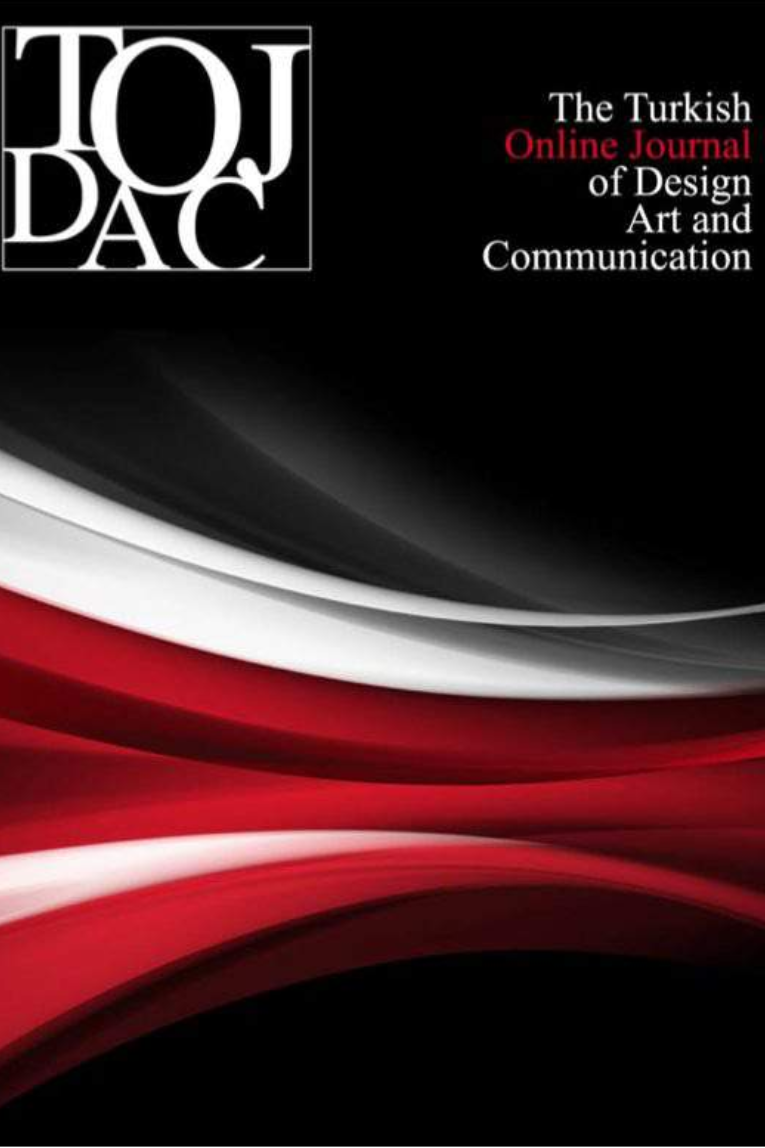A STUDY ON MEASURING COMPLEXITY IN MUQARNAS PATTERNS
Muqarnas, Islamic Geometric Pattern, Geometry, Algorithmic Design, Complexity
___
- Abdullahi, Y., & Embi, M. R. B. (2013). Evolution of Islamic geometric patterns. Frontiers of Architectural Research, 2(2), 243-251. Alaçam, S., Güzelci, O. Z., Gürer, E., & Bacınoğlu, S. Z. (2017). Reconnoitring computational potentials of the vault-like forms: Thinking aloud on muqarnas tectonics. International Journal of Architectural Computing, 15(4), 285-303. Al Kashi G.A.D.N. (1977). Key of arithmetics (ed Nablusi N, Arabic edition). Damascus: University of Damascus Press. Arik, M., & Sancak, M. (2007). Turkish–Islamic art and Penrose tilings. Balkan Physics Letters, 15(1), 1-12. Arnheim, R. (1971). Art and Entropy: An Essay on Disorder and Order.Berkeley: University of California Press. Berggren, J. L. (2017). Episodes in the mathematics of medieval Islam. Springer. Castera, J. M. (1999). Arabesques: Decorative Art in Morocco. Art Creation Realisation. Castera, J. M. (2016). Persian variations. Nexus Network Journal, 18(1), 223-274. Crompton, A. (2012). The entropy of LEGO®. Environment and Planning B: Planning and Design, 39(1), 174-182. Cromwell, P. R. (2009). The search for quasi-periodicity in Islamic 5-fold ornament. The Mathematical Intelligencer, 31(1), 36. Dold-Samplonius, Y., & Harmsen, S. L. (2005). The muqarnas plate found at Takht-i Sulayman: a new interpretation. Muqarnas, 22, 85-94. Einstein, A. (1921). Geometry and experience, reprinted in Ideas and Opinions, New York: Bonanza Books. Güzelci, O. Z., Güzelci, H. (2015). An Experimental Study on Generation Process of Geometric Patterns. Proceeding of XVIII Generative Art Conference, Italy. Hankin, E. H. (1905). On some discoveries of the methods of design employed in Mohammedan art. Journal of the Society of Arts, 53, 461-77. Harmsen, S. (2006). Algorithmic computer reconstructions of stalactite vaults-muqarnas-in Islamic architecture. PhD Thesis, Heidelberg University, Heidelberg. Heinrichs, W. (1997). The etymology of muqarnas: some observations. In: Krotkoff G, Afsarudding A and Matias Zahniser AH (eds) Humanism, culture, and language in the Near East: studies in honor of Georg Krotkoff. Warsaw, IN: Eisenbrauns. Hensel, M. (2008). Performance‐Orientated Design Precursors and Potentials. Architectural design, 78(2), 48-53. Houtsma T, Basset R & Arnold TW. (1934). Encyclopaedia of Islam: a dictionary of the geography, ethnography and biography of the Muhammadan peoples. Leiden: E. J. Brill. Kant, I. (1998). Critique of pure reason. Cambridge University Press. Krampen, M. (1979). Meaning in the urban environment, Pion. London, UK. Klinger, A., & Salingaros, N. A. (2000). A pattern measure. Environment and Planning B: Planning and Design, 27(4), 537-547. Lu, P. J., & Steinhardt, P. J. (2007). Decagonal and quasi-crystalline tilings in medieval Islamic architecture. science, 315(5815), 1106-1110. Penrose, R. (1979). Pentaplexity a class of non-periodic tilings of the plane. The mathematical intelligencer, 2(1), 32-37. Osserman, R. (2011). Poetry of the Universe. New York: Anchor. Ödekan, A. (1977). Osmanlı Öncesi Anadolu Türk Mimarisinde Mukarnaslı Portal Örtüleri. İTÜ Mimarlık Fakültesi Baskı Atölyesi, İstanbul. Özdural, A. (1990). Giyaseddin Jemshid el-Kashi and Stalactites. Middle East Technical University, Journal of the Faculty of Architecture, 10, 34-35. Özdural, A. (2000). Mathematics and arts: Connections between theory and practice in the medieval Islamic world. Historia mathematica, 27(2), 171-201. Shannon, C. E. (1949). Communication theory of secrecy systems. Bell Labs Technical Journal, 28(4), 656-715. Stamps III, A. E. (1998). Complexity of architectural silhouettes: from vague impressions to definite design features. Perceptual and motor skills, 87, 1407-1417. Stamps III, A. E. (2004). Entropy and visual diversity in the environment. Journal of Architectural and Planning Research, 239-256. Terzidis, K. (2003). Expressive Form: A conceptual approach to computational design. Taylor & Francis. Url-1: https://en.wikipedia.org/wiki/Geometry Url-2: https://en.wikipedia.org/wiki/Topology Url-3: https://en.wikipedia.org/wiki/Iconoclasm Url-4: http://shiro1000.jp/muqarnas/ Url-5: http://muze.semazen.net/content.php?id=00066
- Başlangıç: 2011
- Yayıncı: Deniz YENGİN
SANAT KURUMLARINDA İNSAN KAYNAKLARI YÖNETİMİ ÇERÇEVESİNDE ÖRGÜTSEL DAVRANIŞA BAKIŞ
AFYONKARAHİSAR DİNAR BADEMLİ KÖYÜ CAMİ RÖLEVE PROJESİNİN LAZER TARAMA YÖNTEMİYLE HAZIRLANMASI
Şerife Ebru OKUYUCU, Gamze ÇOBAN
AFET İÇERİKLİ HABERLERİN SOSYAL ÖĞRENME KURAMI BAĞLAMINDA DEĞERLENDİRİLMESİ
ARCHI-MIMESIS AS A DESIGN DOCTRINE
Özgür DEMİRKAN, Ayhan USTA, Emre ENGİN
A STUDY ON MEASURING COMPLEXITY IN MUQARNAS PATTERNS
Orkan Zeynel GÜZELCİ, Sema ALAÇAM
DESIGN OF A ROBOTIC TOY AND USER INTERFACES FOR AUTISM SPECTRUM DISORDER RISK ASSESSMENT
ENVIRONMENTAL CUES: A METHODOLOGY FOR STUDYING MEANING IN BUILT ENVIRONMENT
TEKNOLOJİ BAĞIMLILIĞI OLARAK DİJİTAL BAĞIMLILIK
YAŞAMIN ÖZNESİNDEN ORTAMIN NESNESİNE
